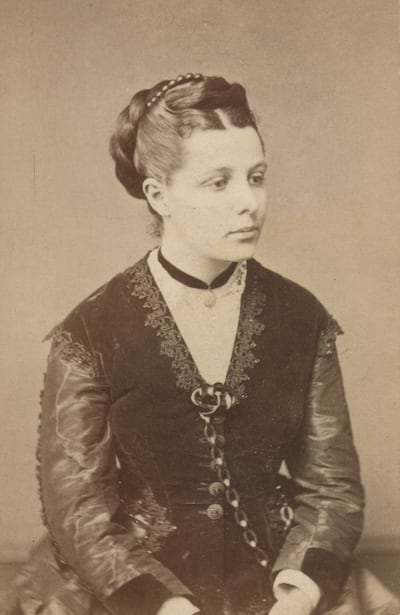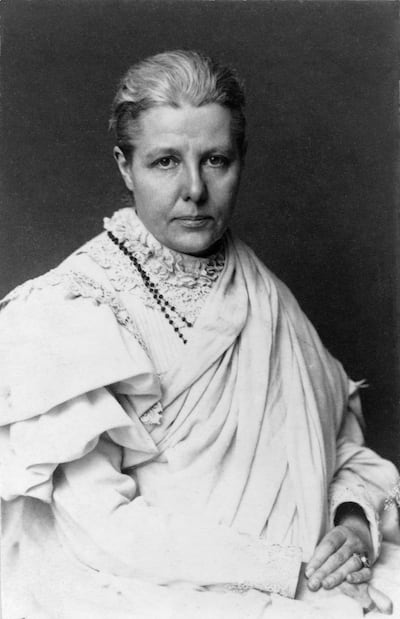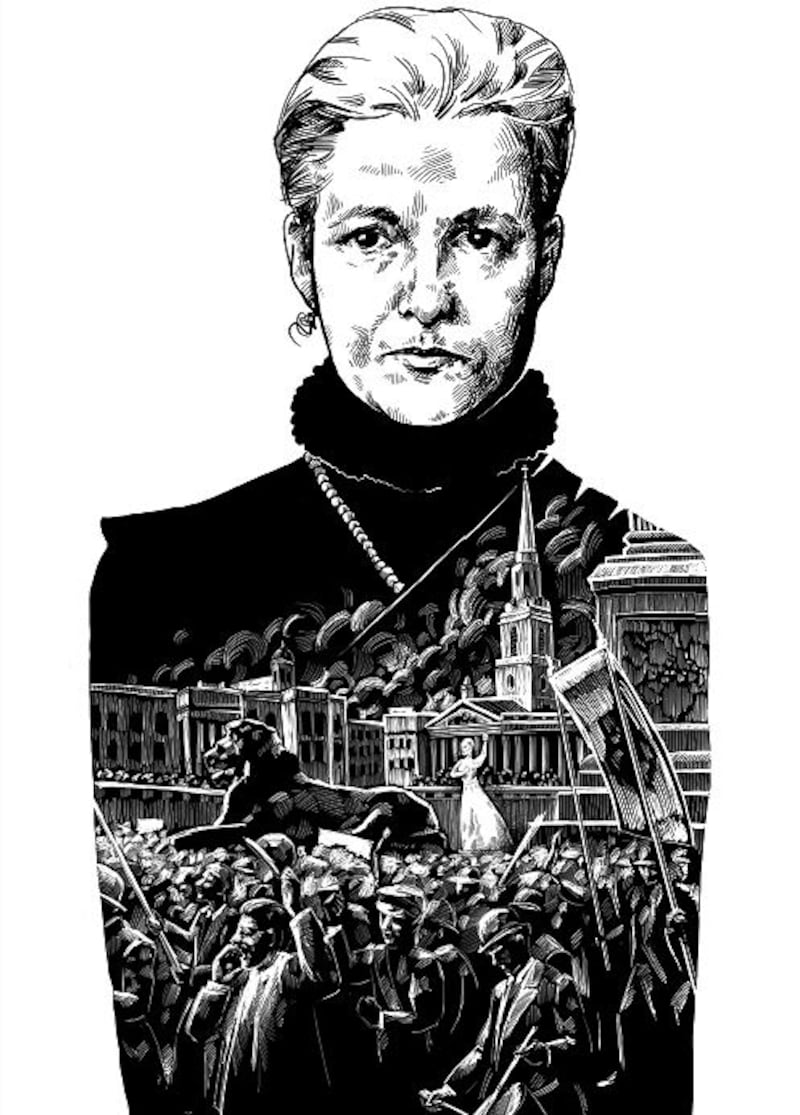In 1874, Annie Besant left her controlling husband and reinvented herself as one of Victorian Britain's leading activists. Fifteen years later, she reinvented herself for a second time, turning to Theosophy and Indian nationalism.

Annie Wood was born in London in 1847 to Irish parents. After her father's early death, her mother took in boarders and sent Annie to Dorset to be educated at the charity of a "wealthy spinster", Ellen Marryat. There, Annie developed an intense religiosity that would later be supplanted by atheism.
At 19, she married Reverend Frank Besant. She later admitted that they were "an ill-matched pair". She took up writing but was dismayed to learn that as a married woman, her earnings were not her own. She was also horrified by the prospect of a third pregnancy, having had two children in 18 months; they could ill-afford another child, and Annie's autobiography indicates that she was completely ignorant of the facts of sex and reproduction until her wedding night.
Besant’s struggle with her faith began in 1871, when her daughter almost died of whooping cough. On discovering that she was exploring freethought, her husband gave her an ultimatum: take communion regularly in his Lincolnshire parish, or leave. “Hypocrisy or expulsion,” she later recalled - “I chose the latter.” With her brother’s help, she obtained a legal separation and a small allowance, and in 1874 moved to London with her daughter.
‘Red Annie’
"Red Annie" was born. Beginning as a women's rights campaigner, she quickly moved into secularism, trade unionism, and socialism. She filled halls across Britain as one of the National Secular Society's most effective public speakers, and worked as a journalist for the National Reformer.
In March 1877, the Freethought Publishing Company was prosecuted under the Obscene Publications Act for issuing a pamphlet on contraception. At the trial, Annie became the first woman to publicly endorse the use of birth control, arguing for its potential to alleviate poverty, and the following year published her own, more modern pamphlet, The Law of Population. However, her estranged husband claimed that her views made her an unfit guardian, and assumed custody of their daughter, much to Annie's distress.
By the late 1880s, she was a leading socialist: on the executive of the Fabian Society, editor and contributor for an array of socialist publications, and author of the books, Why I am a Socialist and Modern Socialism (1886). On "Bloody Sunday", November 13th 1887, she led a procession by East End workers that ended in violent clashes on Trafalgar Square. She was instrumental in the establishment of the Matchmakers' Union, the first union to exclusively represent women workers. In 1889, she was elected to Tower Hamlets' school board, one of the few paths to civic life available to women at the time.
India

Suddenly, in 1889, she rejected atheism, reversed her position on birth control, and turned to theosophy, convinced by Helena Petrovna Blavatsky, Russian co-founder of the Theosophical Society. Besant may have been attracted by the Society's female leadership and its rejection of Judaeo-Christian patriarchy.
After Blavatsky's death in 1891, Besant became head of the Theosophical Society. Moving to Madras in 1893, she dedicated herself to Indian education, most notably founding the Central Hindu College (later the Hindu University). She adopted Indian dress, attempted to follow Indian social customs, and published her own translation of the Bhagavad Ghita from the original Sanskrit.
Exposed to the realities of life in colonial India, she became active in the campaign for self-government. In 1913, she joined the Indian National Congress, becoming its first woman president in 1917. She was interned as an Indian nationalist in May-August 1917, but her influence diminished thereafter, partly because of her opposition to Ghandian passive resistance. She died at Adyar on September 20th, 1933 and was cremated there, with many tributes paid by Indian feminists.
While the focus of Besant’s activism changed throughout her life, what never altered was her absolute commitment to a cause once she made it her own. These changes of focus demonstrate her openness to new ideas and her unending efforts to find ways to fulfil her early vow to “cure the pain at my own heart by soothing the pain of others”.
[ epicchq.comOpens in new window ]











